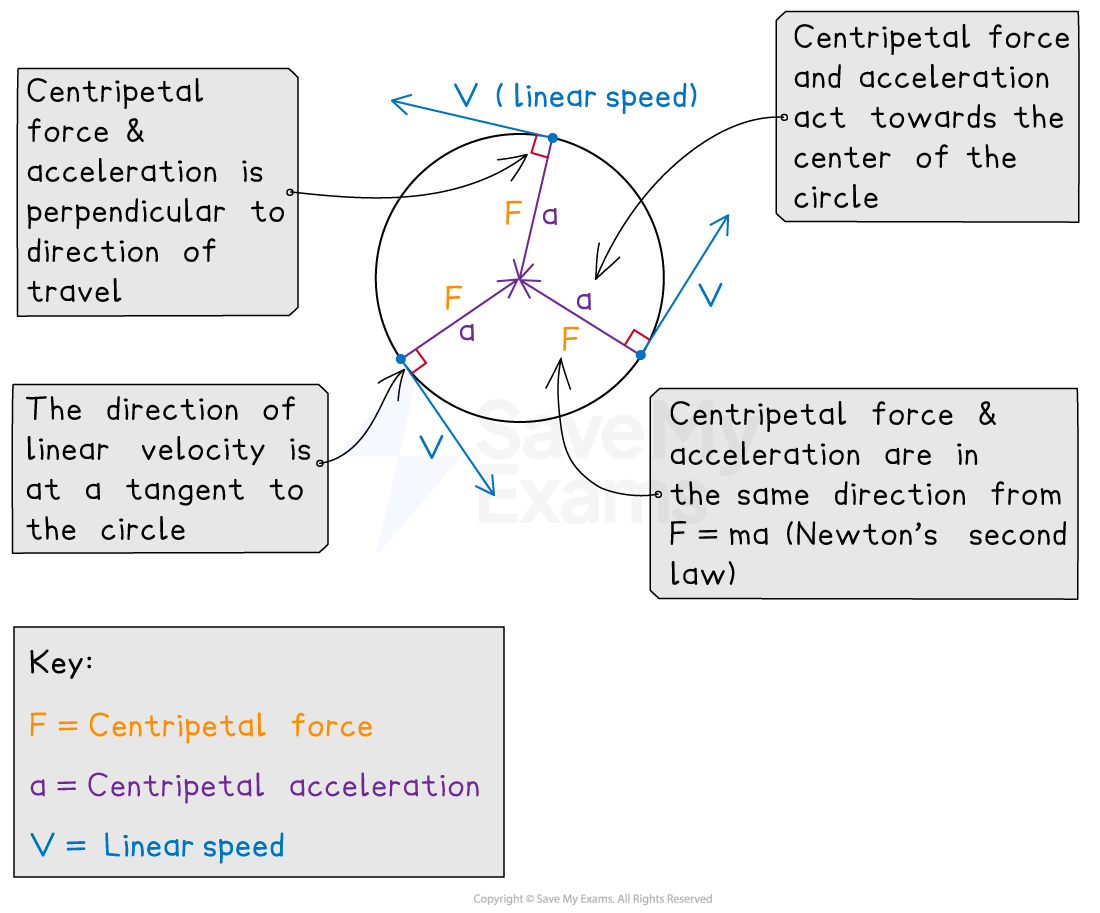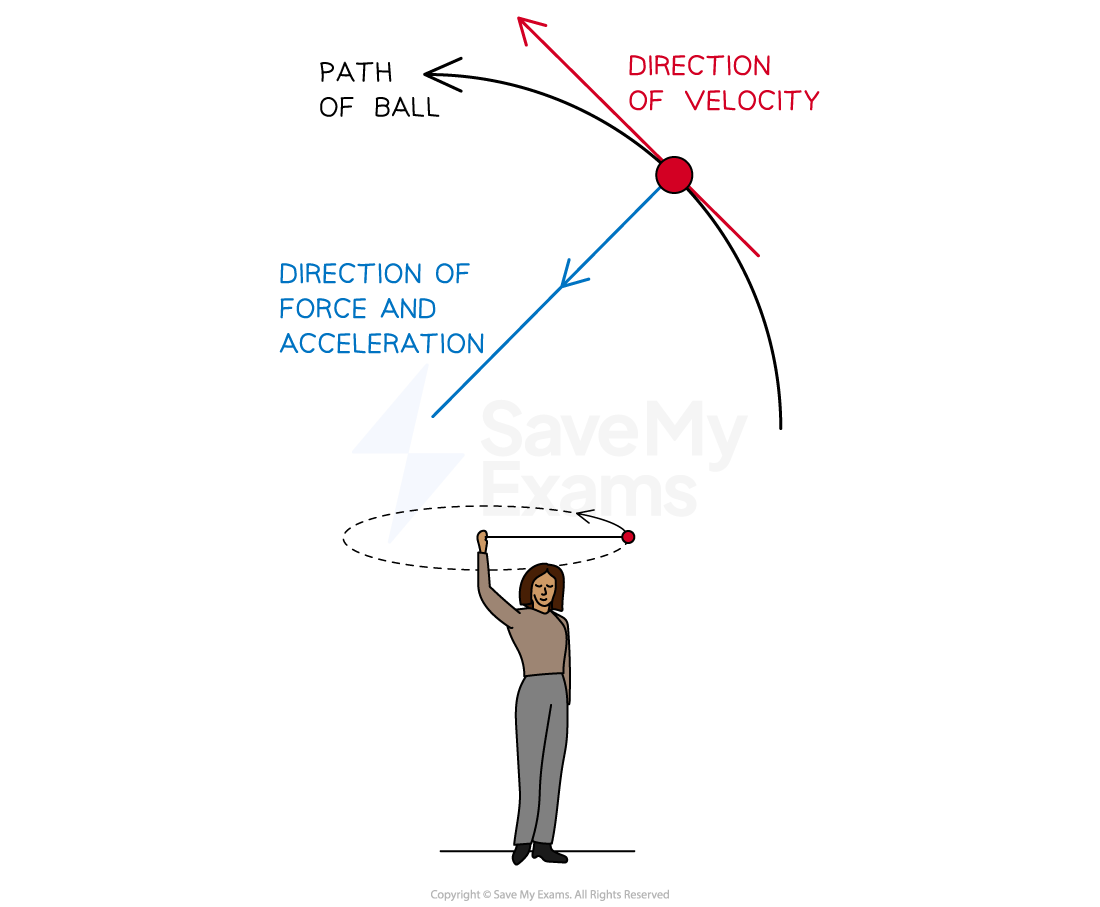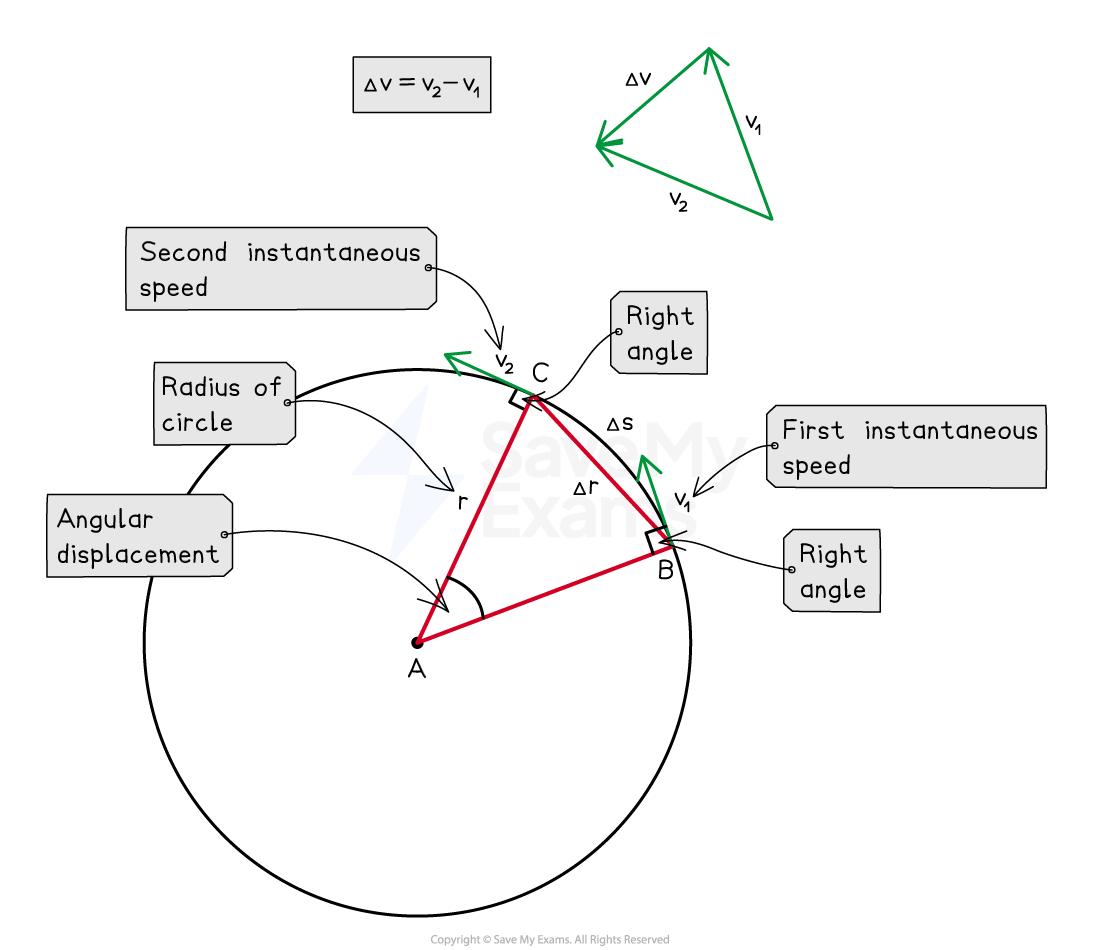Acceleration in Circular Motion (College Board AP® Physics 1: Algebra-Based): Study Guide
Centripetal acceleration
Centripetal acceleration is the component of an object’s acceleration directed toward the center of the object’s circular path
Centripetal acceleration is always directed toward the center of an object’s circular path along the radius of the circle
According to Newton's second law the centripetal force that produces the centripetal acceleration is also directed towards the center of the circle
Centripetal force and acceleration

Centripetal acceleration can result from a single force, more than one force, or components of forces exerted on an object in circular motion
The centripetal force can be any type of force, depending on the situation, which keeps an object moving in a circular path
Examples of single centripetal forces exerted on an object in circular motion include:
Tension in a string keeping a ball secured to its end in horizontal circular motion
Gravitational force keeping the moon in orbit around the Earth
Friction between car tires and the ground keeping a car on the road as it turns a corner
Electrostatic force keeping an electron in orbit around a nucleus
Tension as the single centripetal force

Examples of more than one centripetal force exerted on an object in circular motion include:
Tension in a string keeping a ball secured to its end and gravitational force when the ball is swung in a vertical circle
Gravitational force and the reaction force of a carriage performing a loop the loop in a vertical circle on a track
Examples of components of forces exerted on an object in circular motion include:
The static friction and weight components of a car on a banked, curved road
The tension component of a conical pendulum
Centripetal acceleration equation
The magnitude of centripetal acceleration for an object moving in a circular path is the ratio of the object’s tangential speed squared to the radius of the circular path
The magnitude of the centripetal acceleration is given by the equation:
Where:
= magnitude of the centripetal acceleration, measured in
= tangential or linear speed, measured in
= radius of circular path, measured in
Net acceleration
Tangential acceleration
Tangential acceleration is the rate at which an object’s speed changes and is directed along the tangent to the object’s circular path
In a circular path, an object's speed along the tangent to the circular path is also known as its linear speed
Linear speed is always at right angles to the direction of centripetal acceleration along the radius of the circle
Instantaneous speed is the speed at which an object travels in each instant of time
An object's speed changes between two instants of time, so between two instantaneous speeds
The change in speed can be found using the equation
Where:
is the change in speed, measured in
is the initial speed, measured in
is the final speed, measured in
Instantaneous speeds
and
are at different positions on the circular path
Change in instantaneous speed

The rate at which an object's speed changes is given by the change in speed over the time interval,
So tangential or linear acceleration is given by the equation:
Where:
= tangential acceleration, measured in
= change in speed, measured in
= time interval, measured in
Net acceleration
The net acceleration of an object moving in a circle is the vector sum of the centripetal acceleration and tangential acceleration
The net acceleration of an object moving in a circular path is given by the equation
Centripetal and tangential accelerations are, by definition, perpendicular
This means the magnitude of net acceleration can be found using

Unlock more, it's free!
Did this page help you?